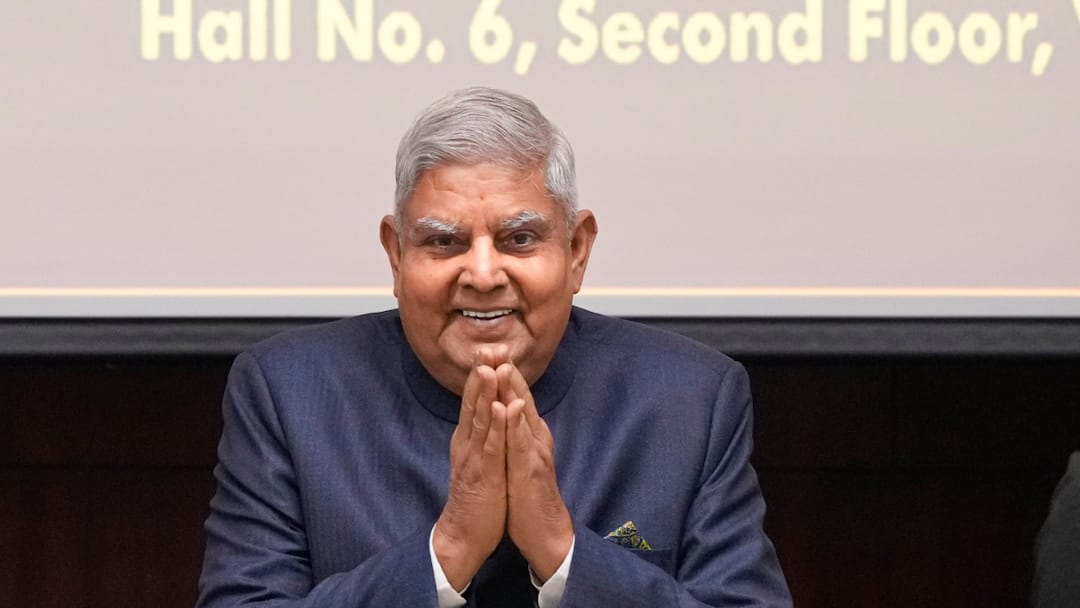How Is The Vice-President Of India Appointed? What Is The Election Procedure?
The Vice-President of India, the second-highest official, serves a five-year term as ex-officio Chairperson of the Rajya Sabha. An Electoral College consisting of MPs elects the Vice-President.

The Vice-President of India holds the second-highest constitutional office in the country, with a term duration of five years. The Vice-President also serves as the ex-officio Chairperson of the Rajya Sabha and is barred from holding any other office of profit. To be eligible for this office, a candidate must be an Indian citizen, at least 35 years old, qualified to be elected as a Rajya Sabha member, and should not hold any office of profit under the Union or state governments or any public authority.
Electoral College
According to Article 66 of the Indian Constitution, the Vice-President is elected by an Electoral College, which comprises the elected and nominated members of the Rajya Sabha and the elected members of the Lok Sabha.
As stipulated in Article 68, the election to fill a Vice-Presidential vacancy must be completed before the expiration of the incumbent’s term. The Election Commission of India, under Article 324 and aligned with the Presidential and Vice-Presidential Elections Act, 1952, and the related Rules of 1974, oversees the election process. An election notification is issued no sooner than 60 days before the outgoing Vice-President’s term ends. Since all electors are Parliamentary members, each vote carries equal value, set at 1. The voting system follows the method of proportional representation with a single transferable vote, ensuring that the process is fair and representative of the elected bodies.
The election is conducted within Parliament House, following the rules established in 1974, ensuring a smooth transition to one of the nation’s most significant constitutional roles. The election is conducted by an Electoral College, which includes members from both the Lok Sabha and the Rajya Sabha — with elected and nominated members from both houses.
Term and Tenure Of Vice-President
Once elected, the Vice-President serves a five-year term. However, the Vice-President can remain in office beyond this term until a successor takes over. Should a vacancy arise due to death, resignation, or removal, the position does not have a direct line of succession.
Resignation from the office is possible by submitting it to the President of India, effective upon acceptance. Additionally, the Vice-President may be removed through a resolution passed by the Rajya Sabha and agreed upon by the Lok Sabha, with a minimum notice of 14 days. Instead, a new election must be organised. Until a successor takes office, however, the outgoing Vice-President remains in position, and in the interim, the Deputy Chairman of the Rajya Sabha may perform certain duties associated with the role.
What Are The Qualifications And Poll Procedure To Elect India's Vice-President?
Candidates for the Vice-Presidential post must be Indian citizens, at least 35 years old, and eligible for Rajya Sabha membership. Additionally, they cannot hold any “office of profit” under the central or state governments, with specific exemptions for certain offices. To nominate a candidate, a minimum of 20 proposers and 20 seconders from the Electoral College must endorse the nomination, and a security deposit of Rs 15,000 is required.
The election is conducted by secret ballot, and unlike other elections, members are not bound by party whips, allowing them to vote independently. The ballots are cast on pink paper with preferences marked numerically by the electors. For a candidate to win, they must secure a majority quota, calculated as 50% of the total valid votes plus one. If no candidate attains this threshold in the first round, subsequent counts with vote transfers are conducted until one candidate meets the quota.
Vote counting takes place at the designated polling location in the Parliament House, often on the same day as the election. If only two candidates are contesting, the winner is determined in the first round of counting. For more than two candidates, a process of elimination is used based on the lowest votes received until one candidate secures the required majority.
After the win, the President of India Administers the Oath of Office of Vice President. The current Vice-President of India, Jagdeep Dhankhar, assumed office on August 11, 2022.
The Vice-President is also the Chairman of the Rajya Sabha.
Can The Polls To Elect Vice-President Be Challenged?
The results of the Vice-Presidential elections can be contested through a petition filed in the Supreme Court. Such a petition must be supported by either the candidate or by at least 10 electors and filed within 30 days of the declaration of the election results.
Related Video
Navi Mumbai Civic Polls: Shiv Sena and BJP to Contest Separately, No Alliance Announced

































